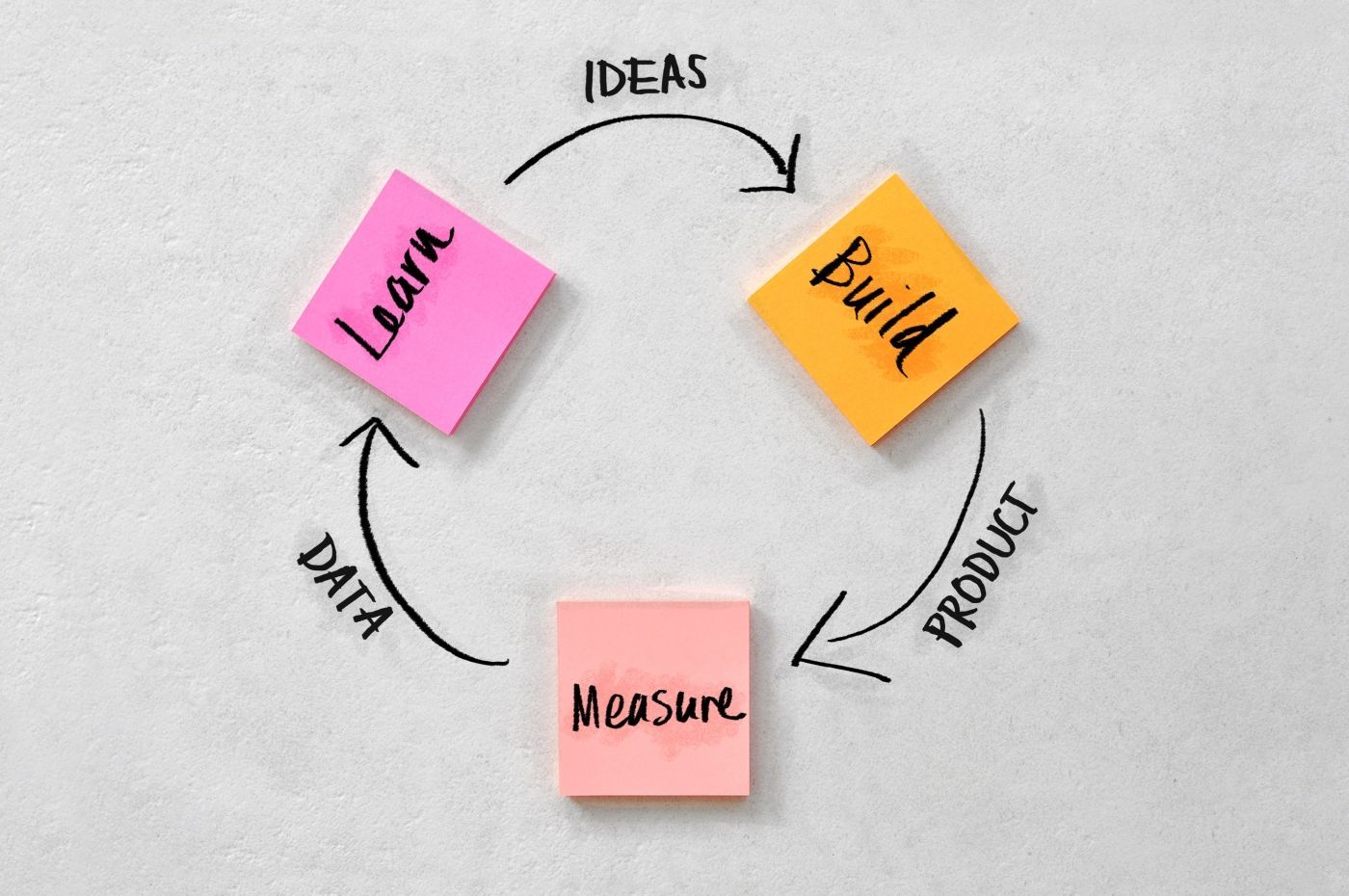Product marketing is a multi-stage process. Like in manufacturing, there are value-creating and non-value-creating activities. To speed up your product development process and boost your business’s efficiency, it is wise to adopt the Lean approach. Lean is a tried and tested methodology used for manufacturing. Over the years, it has been adapted to marketing, becoming its future.
Lean product marketing is a method for developing and testing new product ideas with the least possible overhead and expense. This enables companies to maximize the number of different approaches they try so that when one fails, the company can keep moving forward without increasing its costs or slowing down its work.
Our 3D rendering company provides you with a guide that will teach you everything you need to know about lean product marketing. Starting with the basics of Lean to specific steps and tools, you will learn how to implement those into your business.
1. Lean Product Marketing: Overview

What is Lean Marketing?
Lean Marketing is a philosophy that teaches organizations to get the most value out of every customer and employee. The Lean Marketing System (LMS) is a proven process for achieving this goal. The Lean Marketing Institute defines this process as “creating value for customers by eliminating non-value-added activities and using resources efficiently”.
Lean marketing is about continuous improvement, learning from failures, and taking action. As such, it is a very iterative practice and not something you do once and move on — you continually work on every element of it and improve over time.
The Idea and Philosophy behind Lean Product Marketing
Eric Ries introduced the concept of lean product marketing in his book The Lean Startup: How Today’s Entrepreneurs Use Continuous Innovation to Create Radically Successful Businesses. The idea he gave us is simple — focus on creating great products that customers love before worrying about scaling and profitability.
A lean product marketing works according to the “create-value-learn” model. At the creation stage, it forms a minimally viable product. Then, evaluate the consumer’s reaction, and at the next step, decide whether to go the intended course or change the vector of doing business.
The philosophy behind the whole idea is that you should never invest in anything (including marketing) unless there is a clear return on investment (ROI). You must do everything possible to reduce your business’s waste and focus on creating excellent products that customers love.
Lean product marketing is a philosophy of product development that focuses on creating the right product, in the right way, at the right time. It helps companies develop products that customers need and that generate revenue.
Why is Lean Product Marketing Important?
Lean Product Marketing is a way to improve your marketing strategies. It keeps you focused on the customers and their needs:
- Identify your customers’ problems and their needs so that you can develop products that will solve these problems.
- Find out what your customers want so that you can build products that meet those needs.
- Figure out what competitive products are doing well, so you don’t waste time developing similar products in areas where they’re already being used successfully.
The benefits of lean product marketing include:
- It increases lead generation through effective targeting based on customer data.
- It improves conversion rates from leads.
- It provides a better user experience for customers by delivering value early in the customer journey.
- It reduces costs associated with customer acquisition via less expensive methods (e.g., social media ads).
2. The Concepts and Principles of Lean Product Marketing

Lean Product Marketing is a methodology that helps you develop and launch products that customers want and need. It’s about defining your product, building it, and launching it in the most efficient way possible.
This typically involves creating a set of unique value propositions for your target market and then working with them to define what they value from your product or service. Understanding their problems or pain points and creating solutions for them solves these issues.
The Lean approach is based on 3 main concepts. Let’s look at them in detail!
Eliminate Waste
This concept includes reducing time, effort, materials, and other resources spent in ways that do not add value to the product or service being delivered. This means eliminating anything that does not directly contribute to creating customer value.
Deliver Fast
Delivering fast means allowing customers to get what they want with little friction. In other words, having processes that can be done with minimal effort to deliver products quickly at a low cost. It also includes developing an efficient supply chain that can provide products promptly with minimal expenses (e.g., warehousing, shipping).
Learn Quickly
Learning quickly involves actively seeking customer feedback so you can improve your products/services and eliminate waste in the processes. This means measuring what matters most to enhance a product/service to the maximum of its potential.
5 Key Lean Principles in Marketing
Lean Marketing is a systematic approach to marketing that leverages the value of innovation, customer focus, and continuous improvement. The Lean Marketing System (LMS) is based on fundamental principles that help you improve your organization’s performance, continuously innovate and deliver more value to customers. Here are 5 fundamental principles:
- Value-Based Pricing – focus on what is essential to your customers, not what you can charge them.
- Customer Focused – listen to your customers and focus on their needs.
- Eliminate Waste – reduce activities that do not add value for customers or your organization.
- Autonomous Teams – give your team freedom, authority, and accountability for results.
- Continuous Improvement – improve continuously through experimentation and learning from mistakes.
Lean Marketing System Components
The Lean Marketing System is made up of 3 main components:
- Lean Thinking – the underlying philosophy behind the Lean Marketing System. This includes the concept of continuous improvement and its marketing application.
- Lean LaunchPad – the Lean LaunchPad is an interactive tool for developing new products or services. It consists of five stages: Identity – Define – Ideate – Prototype – Validate. It allows you to test your ideas before spending time and money on them so that only those with real potential develop further.
- Lean Operations – the tools and techniques used in everyday business operations to make processes more efficient, effective, and consistent with customer needs.
Lean Marketing Framework
The Lean Marketing framework is a holistic approach to marketing that uses science, data, and analytics to drive better results. It’s one thing to have a great product or service, but if you don’t have the right product marketing strategy in place, it won’t matter. Lean Marketing focuses on building a sustainable business. It considers all customer touchpoints with your company and helps create measurable goals.
The main goal of Lean Marketing is to ensure that every touchpoint between your brand and customer provides value so that they come back repeatedly without having to be reminded by expensive marketing campaigns.
3. Lean Product Marketing Techniques

Several methods and techniques can create a lean marketing strategy. You can use and combine these methods to form your unique approach. Each of them has its benefits and drawbacks but also shares similar characteristics.
Scrumban (Combination of Scrum and Kanban)
Scrumban uses a Kanban board to organize tasks into stages and columns. It also uses Scrum meetings to solve problems, make decisions, and plan new initiatives. The main advantage of Scrumban is that it allows you to make changes without having them affect other projects or processes.
A/B testing
Instead of spending money on thousands of different landing pages or emails, you can test one variation against another using an A/B testing tool like Optimizely or Visual Website Optimizer. A/B lets you see which version drives more engagement without wasting time trying out different designs or copy variations that may not affect your conversions.
Customer Empathy
Focus on understanding customers’ needs and desires in lean marketing. You can do this through qualitative research with customers and potential customers and tracking their behavior with analytics tools such as Google Analytics.
Product Development
Once we understand our customers’ needs, we attempt to build products that meet those needs as closely as possible. Product Development can include tools like user testing or A/B testing to validate new designs before they assemble into total products.
Omnichannel Marketing Communications
Once a product has been built and released into the wild, it is time to start communicating its benefits to your target audience through marketing channels like advertising, social media posts, email newsletters, and blog posts. The omnichannel approach provides the same experience across all channels, including email, search engine optimization, social media, and mobile apps.
4. Lean Product Marketing Tools

There are a few essential tools that every lean product marketing team should have in their arsenal to be successful. Primarily, an intense customer development process is vital. Having a structured way to identify and reach out to potential customers, gather feedback, and validate product hypotheses.
A lean product marketing team should be well versed in growth hacking techniques and effectively grow a user base through creative marketing and engagement tactics. Data is critical for any lean product marketing team. Access to robust data analysis will help the team track progress, identify areas of opportunity, and make informed decisions about where to focus their efforts.
Some of the most popular lean product marketing tools:
Product Market Maps
These maps allow to identify areas of opportunity in the market and can be used to create marketing plans and strategies.
Customer Journey Mapping
This tool helps to understand the customer journey from awareness to purchase and can be used to identify areas where marketing efforts can be improved.
Value Proposition Canvas
Value Proposition Canvas is a perfect asset to create a compelling value proposition for your product or service and can be used to drive marketing efforts and messaging.
Heatmap Analysis
This tool helps identify which areas on your website receive more attention than others by analyzing mouse movements over time and color-coding them based on their popularity (i.e., red = popular). It can also tell where people click once they land on your site. If there’s an area that nobody clicks on but receives lots of attention in heatmaps, consider removing it from your site altogether.
Lean is a set of principles that allows us to make our processes more efficient. Using Lean principles can help us improve everything from our products and services to how we communicate with customers and prospects. When used appropriately, Lean techniques can reduce waste, increase speed and agility, and improve quality throughout the entire organization, including product marketing!
The visual part of product marketing is one of the most important. Our product 3D services will help you implement any marketing ideas by visualizing the outcome in every detail. It is the fastest, most cost-effective way to test your idea before building it and validating your concept. Trust us to turn your vision into reality and get amazing product visuals now!
